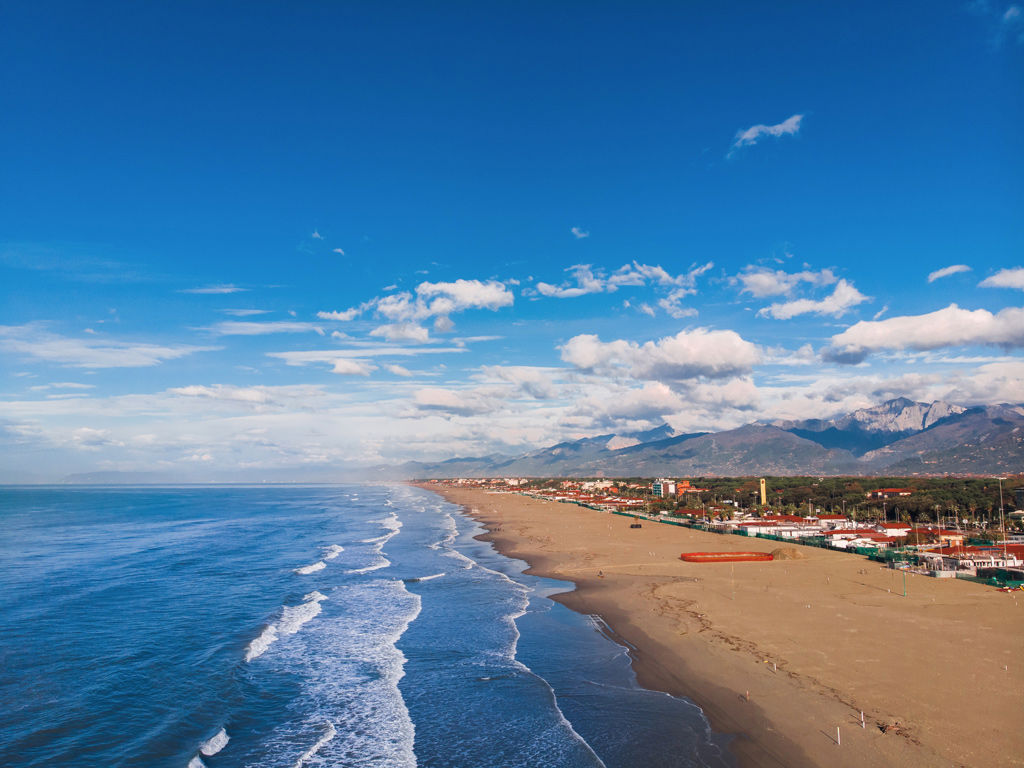
Known for its famous Riviera and the splendid Alpi Apuane mountains behind, Viareggio extends over an area of more than 20 km of beaches from Lake Massaciuccoli to the banks of the Cinquale.
In the inland territory, the hills and mountains offer possibilities for mountain and rock climbing, caving and hiking up to mountain refuges.
Mountains allow you to alternate beach life with activities for alpinists with the possibility of high-altitude hiking, trekking but also more specialized activities such as speleological excursions.
Viareggio, municipality of the province of Lucca, as well as being the ideal destination for a relaxing family holiday also hosts an important event such as the Viareggio Carnival, which over the decades has become the very symbol of the city with permanent spaces dedicated to construction of allegorical wagons.
A stay Viareggio cannot exclude the most characteristic place of the city where once there was several commercial activities and today you can spend pleasant hours walking and admiring stores of big brands or enjoying one of the delicious ice creams proposed by kiosks and bars: the coastal promenade.
The Grand Hotel Royal in Viareggio is located in the prettiest spot of the promenade, Lungomare Carducci, and no doubt over the years it has also become one of the symbol of it thanks to the building and the characteristic architectural lines.

Viareggio originated from a castle that the Luccans and the Genoese, allied against the Pisans, built in 1172 on the shore to defend the coast and the surrounding territory. The impressively large stronghold was called the “Castrum de Via Regia”. After all, it was built at the end of that road, called by that name by Emperor Federico Barbarossa, and it was used as a passage between the fort and the inland area. Several centuries later in 1822, Princess Paolina Bonaparte Borghese, Napoleon’s sister, had a lovely villa built near the waterfront where she spent the last years of her life.
This was the start of a new season for Viareggio, the time when swimming in the sea became popular. Because of its beautiful beaches, great geographical position and its citizens’ sense of hospitality, the town began to work its way into becoming a famous beach city. In 1828, the first beach establishments were built: Nereo for men and Dori for ladies, to comply with the moral codes of the times which prohibited swimming together.
Around 1860, large establishments on piles were built: the Nettuno, the Balena, the Felice, the Oceano and all of the others from the Canal to Piazza Mazzini.
At the beginning of the 1900s, the city was known as the “Pearl of the Tyrrhenian”, a popular place of culture and tourism renowned throughout Europe and characterized by its particular architectural style – a combination of Eclecticism and Art Nouveau. During WWII, violent bomb raids levelled entire neighbourhoods, causing hundreds of civilian victims. When peace came, despite the horrendous damage, Viareggio was able to make a comeback by building houses, hotels, shipyards and beach establishments.
